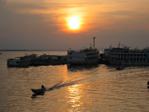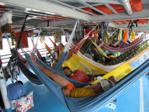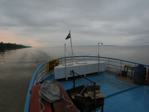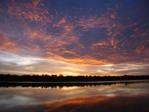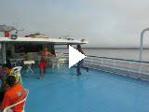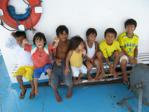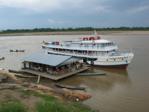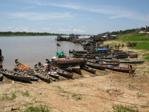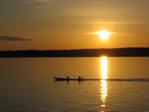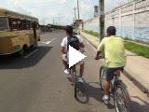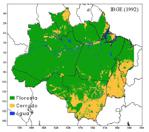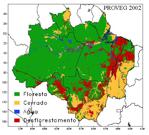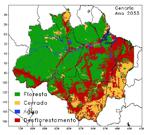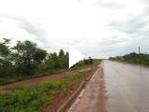Hello from Bolivia! Welcome to the 5th travel summary of Ride for Climate: The Americas.
In the past two and a half months, I have crossed some of the most impressive terrain of this journey (see map of Peru). I traveled two weeks on a boat up the Amazon, crossed the Peruvian Andes (including a section where I had to put my bike on the back of the horse), and followed many dirt roads, camping next to houses where people live off only what they can grow on the mountainsides. I Visited 9 schools (sometimes talking to the entire school) and appeared in the national media of both Peru and Bolivia. I celebrated my one year anniversary of travel overlooking the ruins of Machu Pichu, and I am now in La Paz, Bolivia.
Thank you again to all of the people who have helped me out and sent me positive messages from the road. As always, the people I meet along this journey continue to keep me going (even if I have to learn how to count to ten in the local indigenous language).
ENTRIES FROM PERU (and parts of Brazil and Bolivia)
BEST VIDEOS
Running around a boat to get exercise while floating up the Amazon
My bike on the back of a horse
Getting caught in a thunderstorm at 12000 ft
learning to count to ten in Quechua, the native language of the Andes
The view from 19,000 ft
biking in Lima
Camping next to llamas
Students saying ‘take care of the environment’ in the native language of Quechua
Biking by a political parade near Lake Titicaca
WHAT DOES GLOBAL WARMING MEAN FOR BRAZIL, PERU, AND BOLIVIA?
In my last update, I wrote about the dangers that the Amazon rain forest might face under global warming.
I spent most of the past few months, though, in the Andes of Peru and Bolivia. The clearest problem in the Andes is that much of the water supply and hydroelectric power during the region’s dry seasons is based on glacial water. In the next 50 years, we will likely lose all of these glaciers, resulting in major costs to Peruvians and Bolivians. These countries are also very poor, and the costs to adapt to losing these glaciers is likely to be very high (a world bank study puts the number in the billions of dollars for Peru).
I did not write about this in my entries, but the region is also vulnerable to El Niño, a phenomenon that causes floods in northern Peru and a collapse of fisheries all along the coast (I talked with
some fishermen about this, and during El Niño years they said they had to find other work). It is unclear how El Niño will change under global warming, but there is some suggestion that El Niños may be stronger or more frequent, or even that the world would turn into a permanent el nino state. How El Niño may change, though, is still very scientifically uncertain.
More likely is a loss of biodiversity. The Andes here are incredibly biologically diverse, and traveling up and down in the mountains, I have seen the vegetation change dramatically (just look through the photos from Peru). A rapid warming, as is predicted, may result in major extinctions.
ANNOUNCING RIDE FOR CLIMATE USA
Yes, I know you all just received an email about this, but I am so excited about this project that I am telling you again: www.rideforclimate.com/usa. And don’t forget to tell people you know who are near our route! The trip starts April 21st, 2007, in Boston.
DO YOU KNOW PEOPLE IN ARGENTINA AND CHILE?
From La Paz, I will be traveling south through Oruro, Bolivia, then down to Salta, Argentina. I will follow the east side of the Andes, and then likely cross into Chile at La Serena before arriving in Santiago just after the new year. If you know people on the route that would be interested in Ride for Climate, let me know!
I now have a little over four months to make it to the tip of Argentina and Chile. Until next time, probably from southern Chile,
David
(I am actually in northern Chile right now, and not La Paz – I wrote this almost two weeks ago, but found almost no internet in southern Bolivia to send it out!)
Flats in Peru: 2
Miles of paved road in Peru: 1,130
Miles of dirt road in Peru: 838
Fire stations slept at in Peru: 9





